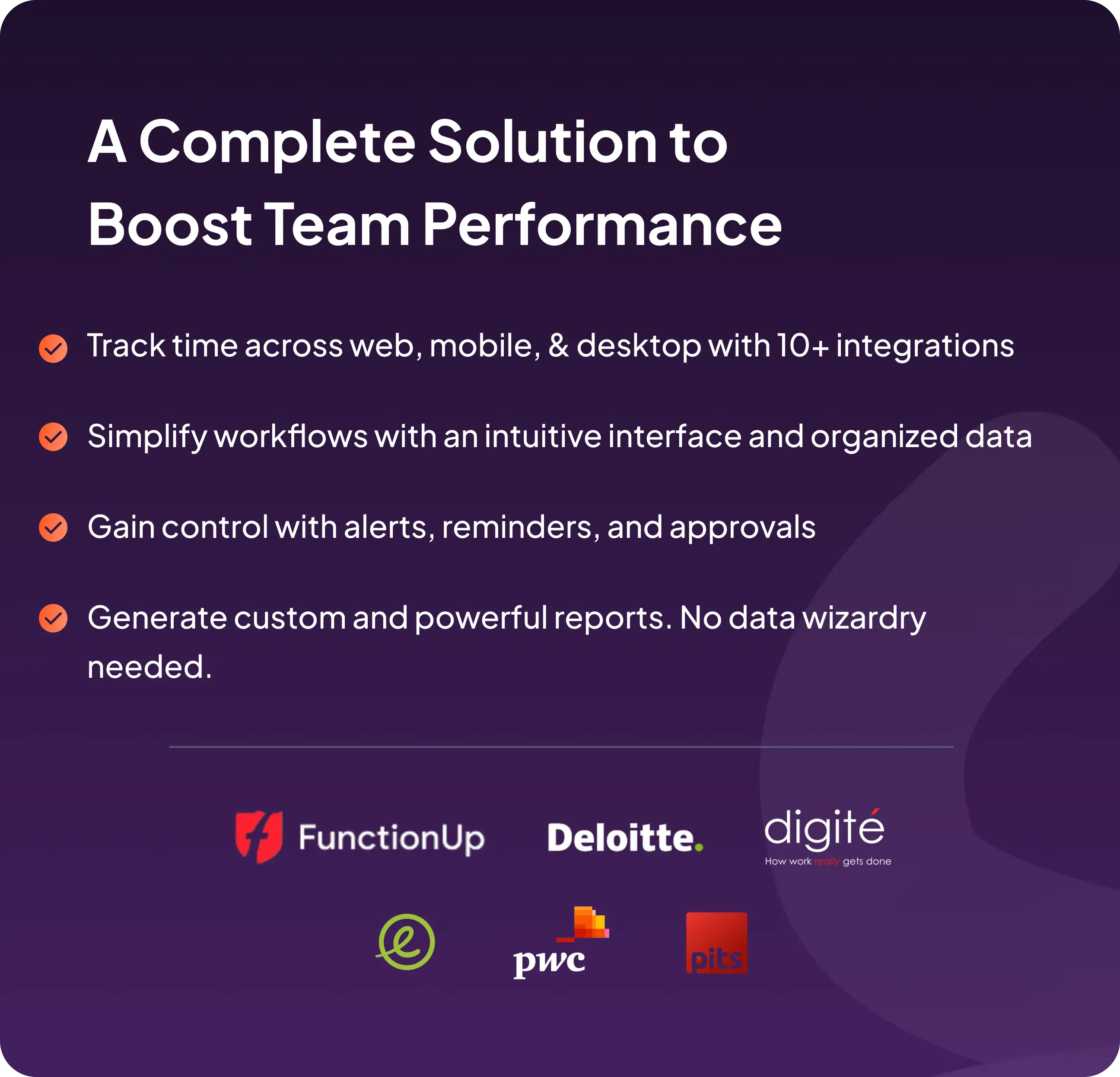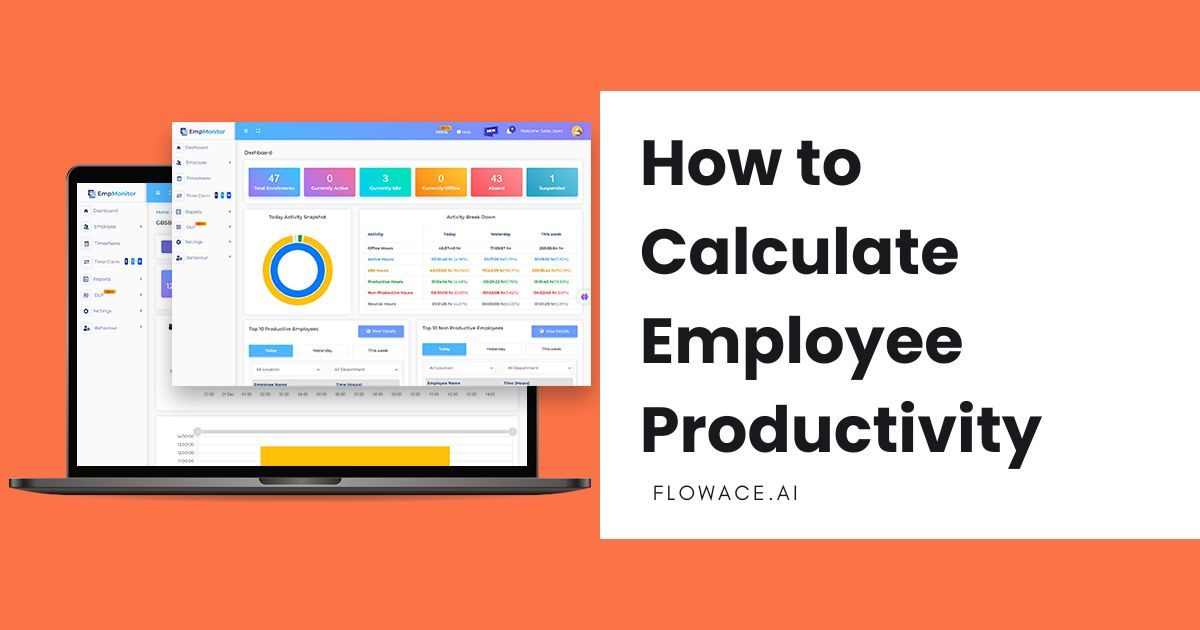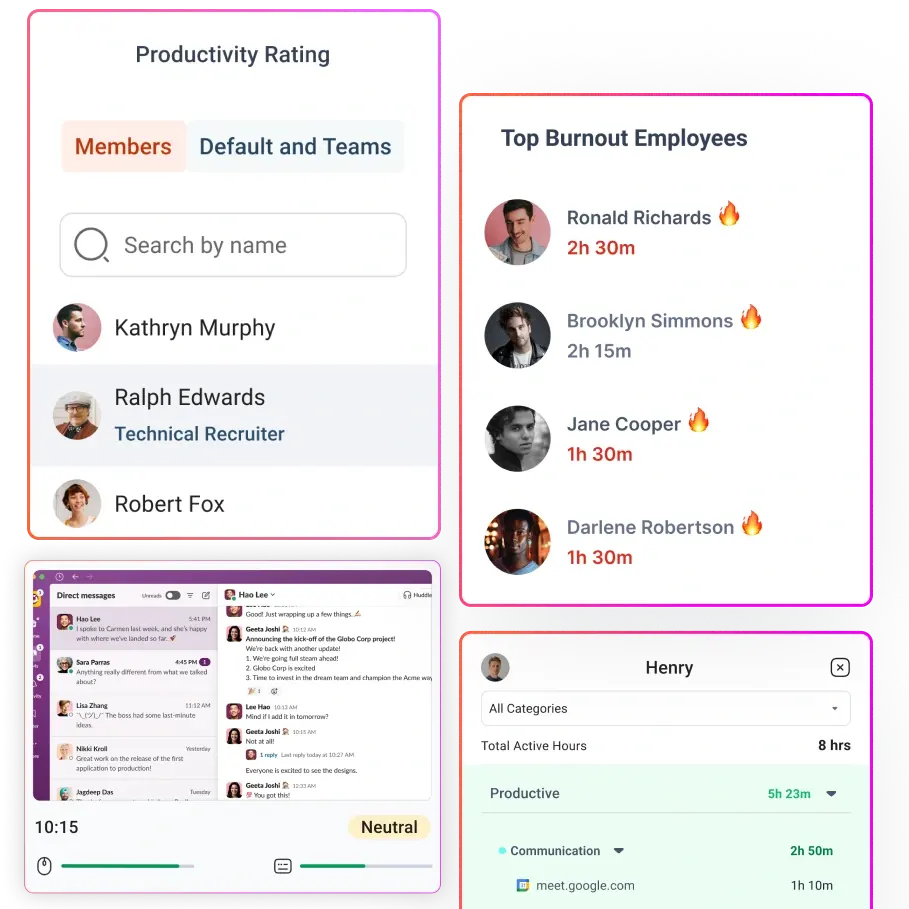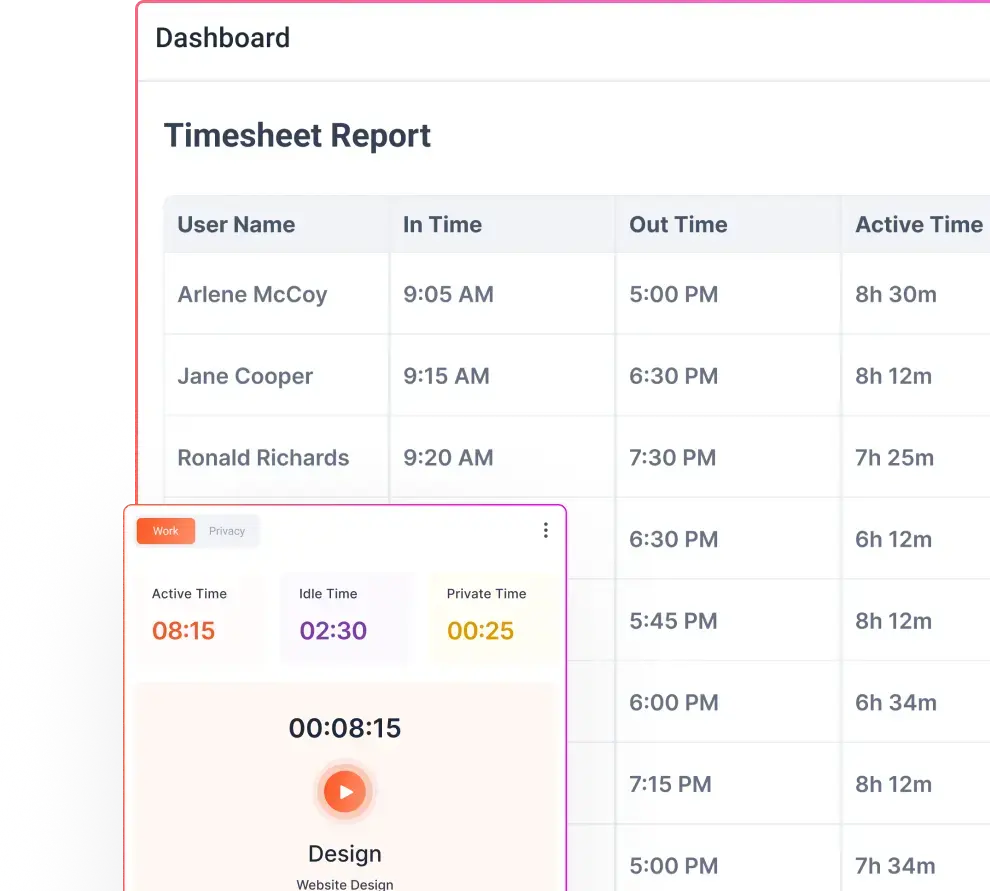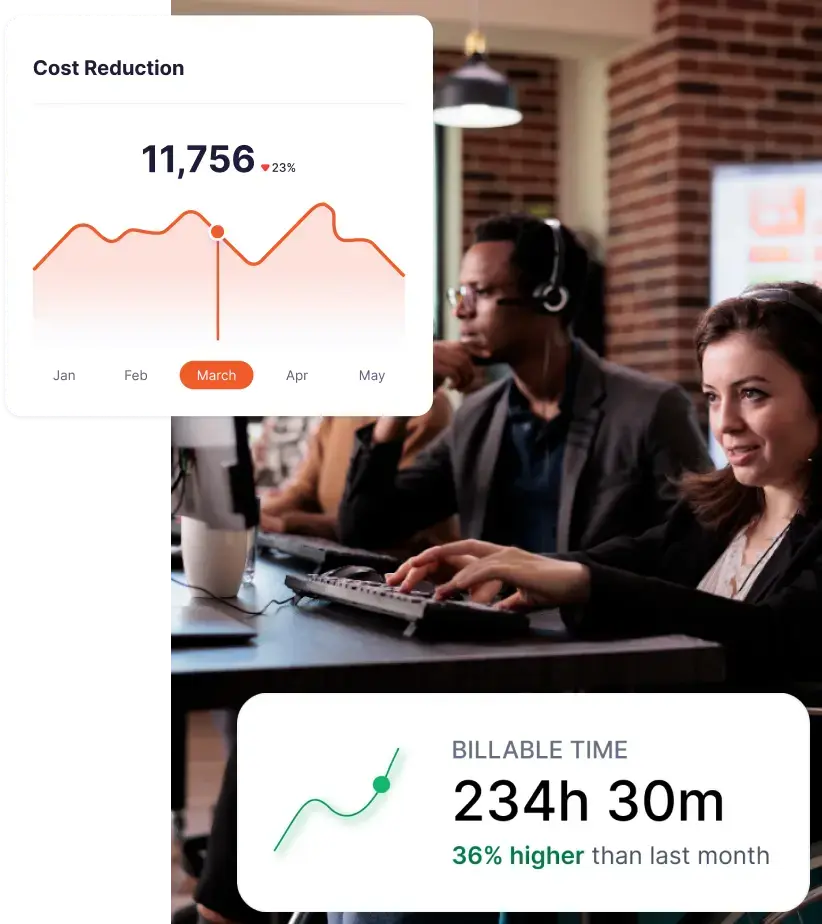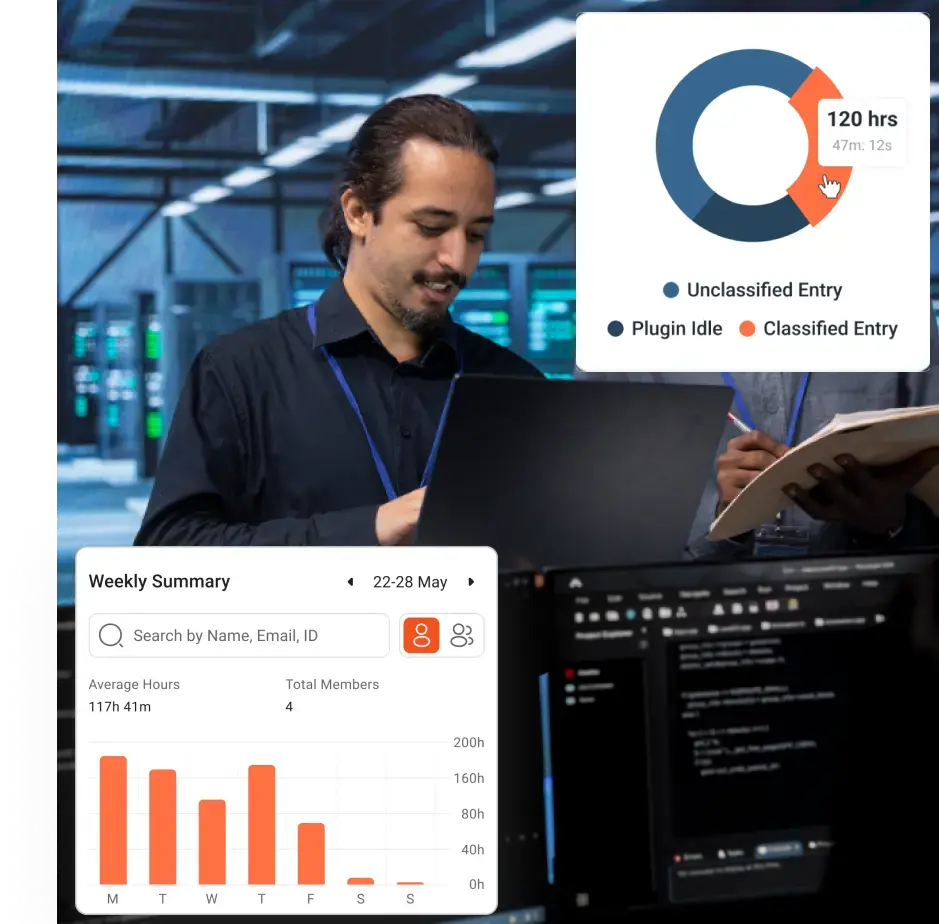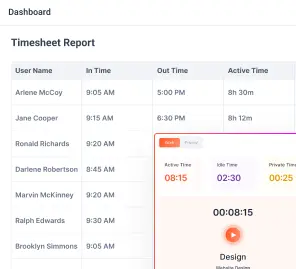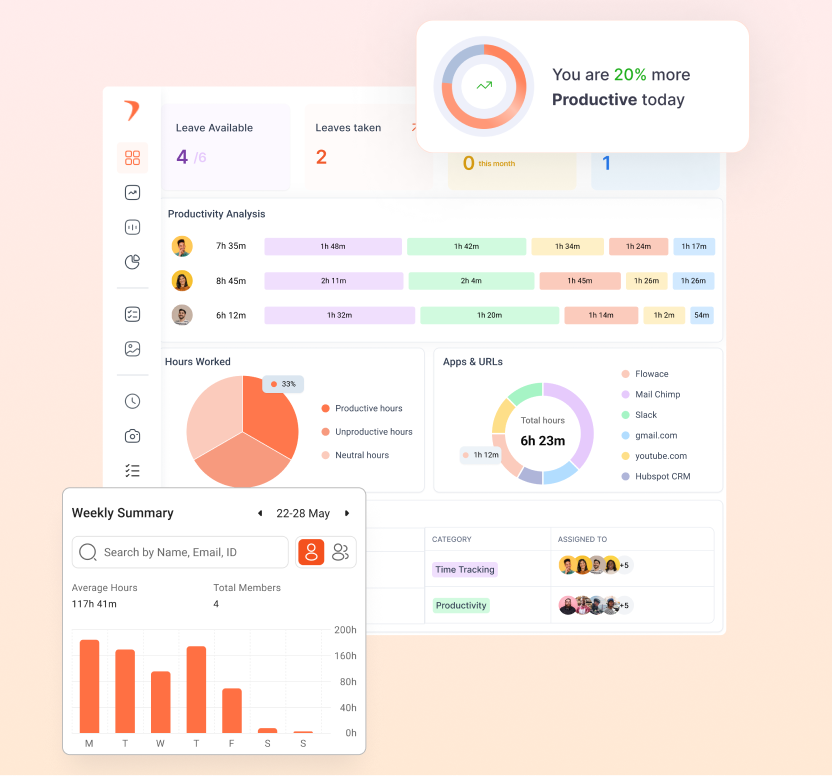In a world where every second counts, the productivity of your workforce can be the difference between thriving and merely surviving.
As businesses evolve with remote work, hybrid models, and ever-changing technology, the spotlight on employee productivity has never been brighter.
Understanding how to enhance and sustain it isn’t just a strategy—it’s a necessity. Let’s explore how you can unlock your team’s full potential with actionable insights and proven measures.
What is employee productivity?
Employee productivity is a metric that quantifies how quickly employees convert inputs into outputs. Materials and energy are inputs, whereas completed goods, leads, and sales are outputs. In addition to providing organizations with insight into individual performance, employee productivity is crucial for assessing an organization’s capacity to meet its objectives.
Does productivity come more easily to some people? Or are there actions managers can do to boost employees’ output? With the aid of this playbook, you will learn how to improve employee productivity by emphasizing production, well-being, engagement, and satisfaction.
Why it’s time to start discussing employee productivity?
The typical workday has changed significantly over the past several years due to the widespread shift to remote and hybrid employment. These modifications to the conventional workplace have several advantages.
Thanks to remote work, potential team members from all around the world are now part of the talent pool. Additionally, several studies demonstrate that working remotely enhances employees’ work-life balance.
Many people believe that working remotely allows them to focus better and work in a calmer setting with fewer distractions, both of which affect productivity. According to research, employees who work from home are 35% to 40% more productive than those who work in offices, and they might help firms save $600 billion annually that would otherwise be lost to workplace distractions.
There are still concerns regarding remote employee productivity. According to a recent poll, a startling 85% of company executives feel it’s difficult to trust that employees are productive because of the trend to hybrid work.
Despite the many benefits of flexible scheduling, employees must also deal with several novel difficulties. These include adjusting to non-traditional work settings, depending more on online collaboration, controlling more control over working hours, and managing previously unheard-of distractions that can make sitting at a desk and being focused more challenging than before.
Why is employee productivity important?
Among other advantages, productive employees may assist companies in increasing revenue and providing better customer service. The whole list of factors that make employee productivity crucial is as follows:
Boost total earnings
Others suffer when an employee takes too long to complete a task or deliver a service. Profits are negatively impacted by inefficiencies, whether a disgruntled consumer posts a nasty review or another employee member has to pick up the slack. Improving employee efficiency and promptly resolving issues is essential for increasing profitability. This explains why businesses with highly motivated, effective employees have higher customer satisfaction and retention rates and are in general 21% more profitable.
Boost employee motivation
Employees feel more purposeful when they have the chance to make a greater contribution to the company. Increasing employee productivity boosts motivation by giving employees a sense of accomplishment. However, incentives are not always as effective as enabling people to achieve daily progress on important work.
Determine which employees are the most valued
Employee engagement is likely to be higher among productive employees. Increased productivity clearly shows who is dedicated to reaching company objectives and who contributes to the overall scheme of things. Leadership is frequently associated with this involvement, as well as with an individual’s sense of autonomy and control over their job.
Boost client support
Employee productivity may enhance customer service because of the advantages mentioned above. When employees work efficiently, they are better able to deliver exceptional customer experiences. Processes function more efficiently, and there is a lower chance of customer neglect when various teams are in sync. This also results in proactive and immediate support for all customers.
Create healthier work relationships
When everyone in the organization is productive and well-coordinated, procedures function much more smoothly. A healthy work relationship includes trust, respect, self-awareness, inclusion, and open communication. When everyone perceives each other as productive, better working relationships can result.
How is employee productivity changing?
Since remote work has brought about a lot of changes, managers are naturally curious about how employee productivity compares to what it was like when everyone was in the office. Common questions include:
- Are my team members working more, less, or the same?
- How can I support increasingly flexible remote work environments without sacrificing productivity levels?
- Are processes being followed even though I can’t see them?
- How much of the workday is productive time, and how much is spent replying to Slack messages?
In the present environment, these are all excellent questions to ask, and they’re more prevalent than you may imagine. Without making informed guesses, workforce analytics is the only method to provide answers. Once you understand how people work, it’s much easier to determine what true productivity looks like at your company so you can measure it accurately.
What factors affect the productivity of employees?
Elements such as culture, environment, training, and technology greatly influence employee productivity and, consequently, company outcomes.
Culture of the company
With good reason, 86% of corporate executives think that company culture increases productivity. Research shows that favourable work environments where individuals feel valued and respected may significantly impact employee engagement and morale. Cutthroat cultures, on the other hand, frequently result in high healthcare costs, disengagement, and a general lack of loyalty, all of which can have a significant financial impact on an organization over time.
Workplace settings
Temperature, inadequate lighting, and even dehydration can affect productivity, whether employees are working from home or in an office. How does your company assist employees in enhancing their living or working environments?
Variety
When your team is made up of people from different backgrounds, your organization benefits from a variety of perspectives and skill sets. Does your workplace foster diversity and inclusion?
Training
One poll indicated that 64% of firms feel the talent gap is holding their business back. Does your employee have a positive onboarding experience? Do they have the abilities necessary to accomplish their professions well, or do they require further training to stay current?
Health and well-being
Compared to employees who are suffering, those who are in good physical and mental health are more likely to perform successfully. The latter may appear, but they are not in a position to perform at their highest level. They battle in silence due to illness or injury to accomplish what they can, which is known as “presenteeism” and diminishes production rather than doing labor at a lucrative pace. How is the well-being of your employees being prioritized at your company?
Technology and equipment
With the right tools and technology, employees can maximize their time and work more productively. Are the proper tools available to your employees? Have they received instructions on their use?
When is the peak time for employee productivity?
Three conditions are met for the highest level of workforce productivity:
- Individual empowerment is a reality for people.
- Higher degrees of process and workflow optimization are achieved.
- You make the most of technology in your workplace.
These elements are all equally significant. One of the most widespread myths regarding employee productivity, particularly in the context of remote work, is that each employee’s motivation and drive are the only factors influencing the productivity of your team.
In actuality, productivity, engagement, and employee happiness are all correlated. Because of this, it’s critical to make sure that your technology enables teams to function effectively and that your procedures enable people to perform at their highest level. To increase employee morale and productivity, this is essential.
5 Strategies for Managing Employee Productivity
1. Focus on the Big Picture
Help employees understand how their work contributes to organizational goals. Aligning individual objectives with the company’s mission fosters a sense of purpose.
2. Keep the Lines of Communication Open
Transparent and frequent communication builds trust and ensures that employees have clarity about expectations and feedback.
3. Create Feedback Loops
Regular performance reviews and constructive feedback help employees identify areas for improvement and celebrate achievements.
4. Evaluate Obstacles
Identify bottlenecks and challenges hindering productivity. Proactively addressing these issues ensures smoother workflows.
5. Focus on Engagement
Engaged employees are more invested in their work. Foster engagement through recognition programs, professional development, and meaningful projects.
How to increase employee productivity
Improving employee productivity is undoubtedly a top priority for modern businesses. Employers can utilize the following methods, procedures, and inspirational techniques to boost employee productivity:
1. Allow individuals to relax
The most astute corporate executives understand that preserving an achievement-oriented culture requires relaxation. The proper amount of downtime may boost productivity instead of decreasing it. Furthermore, it can be a manageable change. Promoting vacations, lunch breaks, and electronic downtime may make a big difference in ensuring that employees receive the sleep they require to function at their best.
2. Promote self-care and health
The efficiency of the workforce depends on encouraging people to look after themselves. Workplace health initiatives that enhance employee health by lowering, avoiding, or managing disease can positively impact employee productivity. The annual cost to U.S. companies of productivity losses resulting from personal and family health issues is $1,685 per employee. Encouraging self-care has a significant impact on raising overall employee productivity.
3. Create friendly competition
Introducing competition into the workplace may boost teamwork, engagement, and output. When tasks or challenges that call for cooperation are created, teams are given the chance to use one another as a resource. Friendly competition might energize the squad. Additionally, employees look for methods to streamline their work procedures in an attempt to increase productivity.
6. Make meetings and emails more efficient
Digital employees today frequently devote a large portion of their day to attending meetings, replying to pings, and, at night, answering emails. As a result of this continuous flow, anxiety, and stress levels may rise, eventually lowering output and performance. Businesses may increase productivity by figuring out how to make these everyday chores more efficient. This is because employees can concentrate on the most important duties with little disruption.
7. Improve training for employees
Long-term productivity is influenced by how businesses onboard new hires. When new hires are properly trained, they have a clear understanding of the work and business requirements, which helps them get off to a solid start. Another reason why continuous employee training is crucial is that it fosters talent within an organization. Retraining employees on modern skills can boost output by avoiding simple, insignificant errors. Employee happiness, confidence, and productivity all rise when employees are proficient in the information and abilities required for their positions.
13 Key Productivity Improvement Measures To Try
Knowing what has to be done, how to accomplish it, and why it matters helps people perform better at work. Here are some ideas to try if your employees are having trouble becoming productive:
- Give them a feeling of purpose by assisting them in comprehending the significance of their work.
- Two ways to give your employees autonomy are to allow them to create significant goals that align with your business’s aims or to offer flexible work schedules.
- Employees need to be trusted; stop micromanaging them.
- Establish a productive workplace. Forward-thinking HR directors understand that offering free lunches is insufficient. Employee engagement, effective listening techniques, and an emphasis on the whole employee experience are crucial in today’s workplace.
- Give them a chance to develop. This might be by acquiring new skills, striving for a promotion, or demonstrating to them how they could take on a new or demanding position or responsibility.
- By giving employees access to training, you may help them become more proficient at what they do.
- When the moment is right, challenge employees to take responsibility by giving them more responsibility and accountability. (An employee who is already overworked won’t like this.)
- Promote employee well-being and self-care. Sometimes, taking a day off from work is far more valuable and significant than working at a desk.
- Congratulate them, thank them, and acknowledge their efforts.
- Provide suitable rewards to encourage people to work a little harder.
- Engage in meaningful, regular, and clear communication with your employees.
- Support them when they aren’t performing as well as you would want, and offer constructive criticism.
- Employ the right technology to enable employees to perform more of what they like, ideally one that makes tasks easier rather than more difficult.
How to create a culture where employee productivity can thrive?
Employee productivity isn’t a one-off project. And it’s not something managers should just look at when they feel their team’s production levels have decreased. To fully empower your employees and put them up for success, you have to aim for a culture where productivity thrives.
This entails establishing an atmosphere in which managers actively look for ways to support the success of their teams, individuals feel involved and empowered, and employee productivity organically grows. Here’s how to instill this culture within your company:
Reinforce your vision regularly
People have varied definitions of productivity, so your employees need to understand what they’re expected to do. Clearly and frequently communicate the department’s goals for employee productivity. Employees who comprehend and share your vision are more likely to stick with you.
Discuss employee productivity honestly
Some teams may link time tracking or monitoring to initiatives aimed at boosting employee productivity. It is your responsibility to combat these ideas! Encourage your employees to freely express their worries and have an open discussion about the benefits of routinely assessing production.
Establish targets for employee productivity
Your attempts to boost employee productivity may stall if you don’t have clear objectives. First, establish productivity measures using workplace productivity analytics, then utilize those data to guide your goals and consider how to reach them.
Determine the points of contention and take action to remove obstacles
An hour of hard work may be undone with just one interruption. Notifications, email alerts, and unnecessary multitasking diminish your employee’s productive time. Ask your employee what sort of help they require and discuss any areas of conflict that are keeping them from completing their work.
Encourage people to take responsibility for their own work and productivity levels
The foundation of workforce productivity is providing employees with the resources they require to succeed rather than holding them accountable for their work habits. Congratulate productive employees on their efficient use of time and encourage them to continue their excellent work. If there is space for development, employees should be empowered and encouraged to see their productivity levels as a starting point for growth.
Ready to experience a productivity boost?
When assessing employee productivity and efficiency, both quantity and quality of work must be taken into account. For some jobs, such as the manufacture of raw materials, quantity is important, but quality usually comes first.
A new viewpoint can completely transform how we define success at work. To support this change, you need a strong workforce management technology like Flowace.
Sign up right away if you’re prepared to put these revolutionary changes into practice for increased productivity!
FAQ’s:
How is employee productivity measured?
Employee productivity is typically measured by output (e.g., tasks completed, sales made) relative to input (e.g., hours worked, resources used).
How important is employee productivity?
Employee productivity is crucial as it directly impacts business performance, profitability, and operational efficiency.
How do you achieve employee productivity?
Achieving employee productivity involves setting clear goals, providing necessary tools, offering training, and fostering a positive work environment.
What is productivity in the workplace?
Productivity in the workplace refers to the efficiency with which employees complete tasks and contribute to organizational goals, often measured by output per unit of input.







































